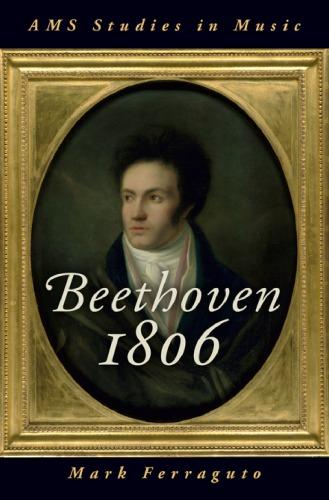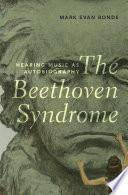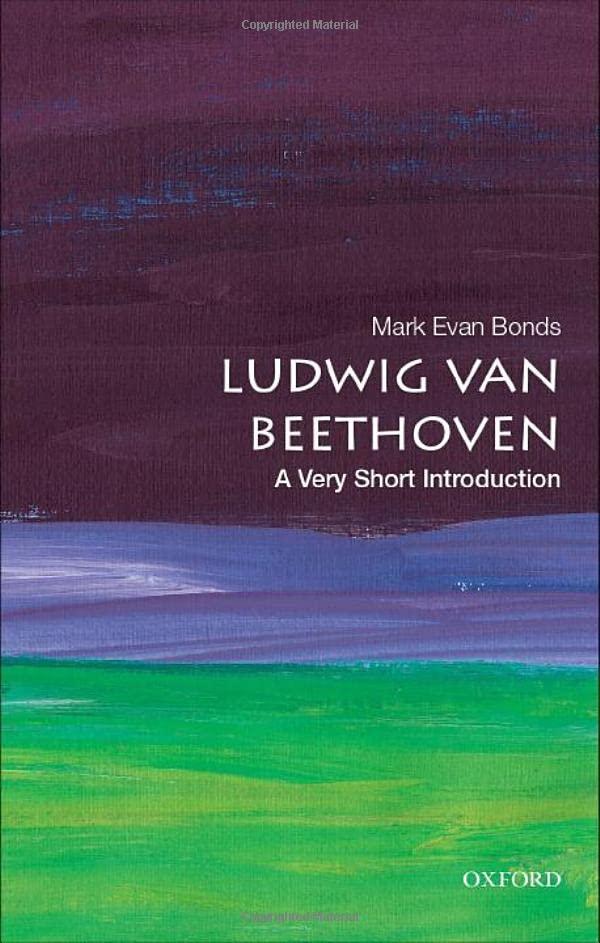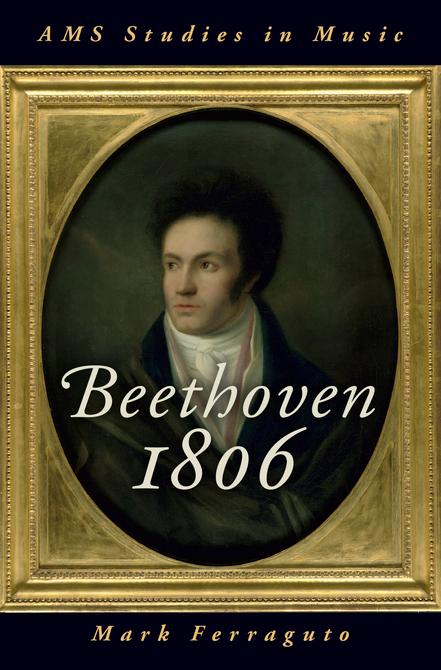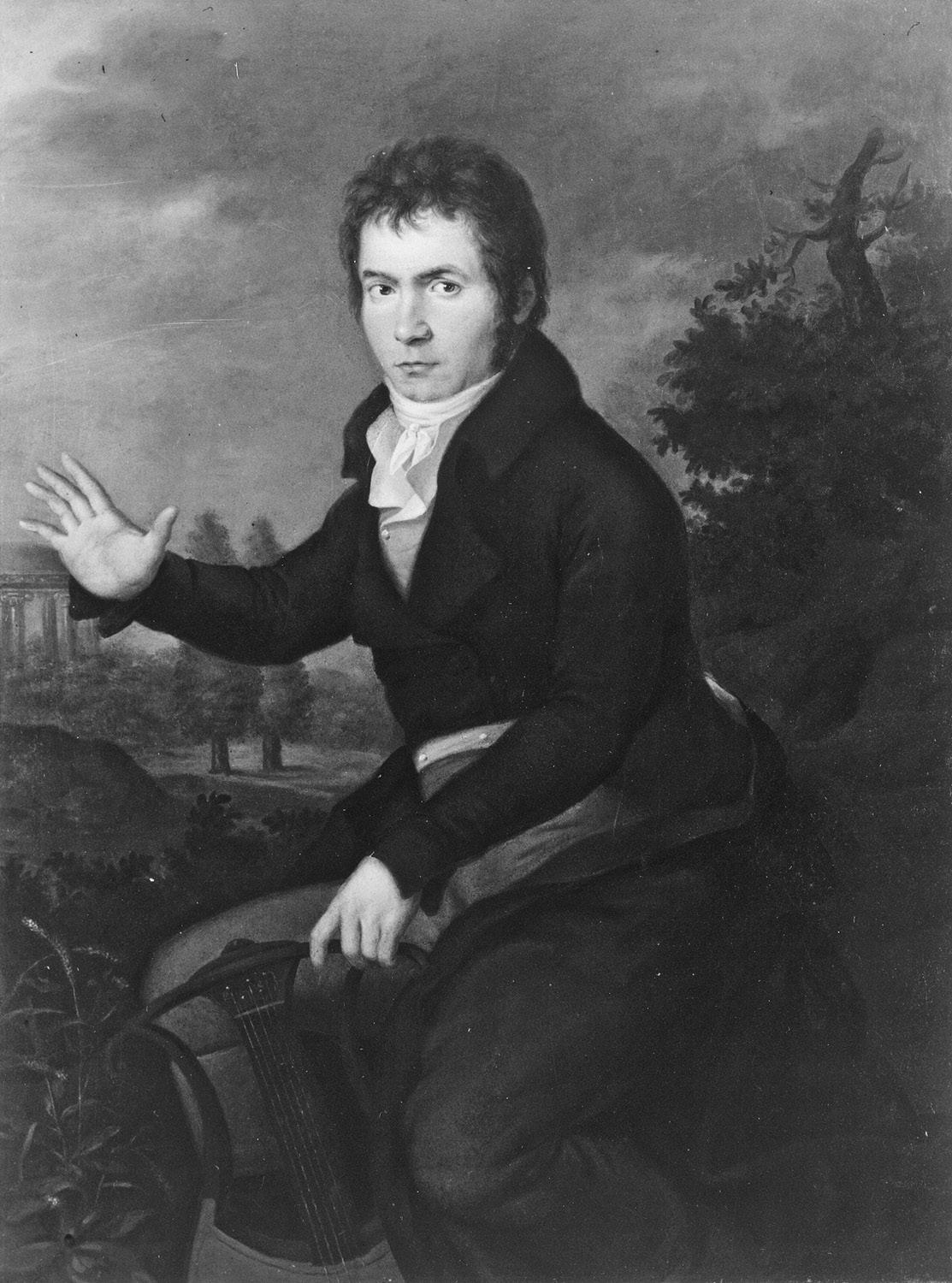Ferraguto
Oxford University Press is a department of the University of Oxford. It furthers the University’s objective of excellence in research, scholarship, and education by publishing worldwide. Oxford is a registered trade mark of Oxford University Press in the UK and certain other countries.
Published in the United States of America by Oxford University Press 198 Madison Avenue, New York, NY 10016, United States of America.
© Oxford University Press 2019
All rights reserved. No part of this publication may be reproduced, stored in a retrieval system, or transmitted, in any form or by any means, without the prior permission in writing of Oxford University Press, or as expressly permitted by law, by license, or under terms agreed with the appropriate reproduction rights organization. Inquiries concerning reproduction outside the scope of the above should be sent to the Rights Department, Oxford University Press, at the address above.
You must not circulate this work in any other form and you must impose this same condition on any acquirer.
Library of Congress Cataloging-in-Publication Data
Names: Ferraguto, Mark, author.
Title: Beethoven 1806 / Mark Ferraguto.
Description: New York, NY : Oxford University Press, [2019] | Series: AMS studies in music | Includes bibliographical references and index. Identifiers: LCCN 2019002769 | ISBN 9780190947187 (hardcover : alk. paper) | ISBN 9780190947200 (epub)
Subjects: LCSH: Beethoven, Ludwig van, 1770-1827—Criticism and interpretation. | Music—19th century—History and criticism. Classification: LCC ML410. B42 F4 2019 | DDC 780.92 [B] —dc23 LC record available at https://lccn.loc.gov/2019002769 1 3 5 7 9 8 6 4 2
Printed by Integrated Books International, United States of America
For Lisa
Figures
I.1 Ludwig van Beethoven (1804). Portrait by Joseph Willibrord Mähler (1778–1860). Photo: Rudolf Stepanek. Beethoven-Haus Bonn. 5
1.1 Faniska, from Wiener Hof-Theater Taschenbuch auf das Jahr 1807, Vierter Jahrgang (Vienna: Joh. Bapt. Wallishausser, 1808). Division of Rare and Manuscript Collections, Cornell University Library.
1.2 Fidelio, from Wiener Hof-Theater Taschenbuch auf das Jahr 1815, Zwölfter Jahrgang (Vienna: J. B. Wallishausser, 1815). Division of Rare and Manuscript Collections, Cornell University Library.
24
25
1.3 Harmonic rhythm in Beethoven, Symphony No. 4, i, mm. 187–334. 39
1.4 Prolonged harmonies in Beethoven, Symphony No. 4, i, development, showing functional reinterpretations. 40
3.1 Le Russe prenant une Leçon de Grace à Paris. Paris: Paul André Basset, 1815. Anne S. K. Brown Military Collection, Brown University Library. 98
3.2 Count Andrey Kyrillovich Razumovsky (1776). Portrait by Alexander Roslin. National Gallery of Victoria, Melbourne. Everard Studley Miller Bequest, 1962.
101
3.3 Palais du Prince Rasoumovsky. [Vienna]: Maria Geissler, [1812?]. Ira F. Brilliant Center for Beethoven Studies, San José State University. 101
4.1 “Sun of German Composers.” Engraving by A. F. C. Kollmann. Reprinted in “Anekdote,” Allgemeine musikalische Zeitung 2, no. 5 (October 30, 1799), cols. 102–4, 104. 118
4.2 Cover pages with title vignettes showing Haydn and Mozart, Allgemeine musikalische Zeitung 7 (1804–5) and 8 (1805–6). 120
4.3 Joseph Haydn (1806). Portrait by Isidor Neugass. Photo: Gerhard Wasserbauer,Vienna. Esterhazy Privatstiftung, Eisenstadt Palace. 122
4.4 Ludwig van Beethoven (1806). Portrait by Isidor Neugass. Fassung Lichnowsky. Beethoven-Haus Bonn. 122
6.1 Design for Heinrich von Collin’s funeral monument by Heinrich Friedrich Füger. Frontispiece to Moritz von Dietrichstein, Ueber das Denkmahl des k. k. Hofrathes und Ritters des Leopold-Ordens, Heinrich Joseph Edlen von Collin (Vienna: Anton Strauß, 1813). Bayerische Staatsbibliothek München. 179
6.2 “Veturia,” from Heroines of History (1530–62). Engraving by Virgil Solis. The British Museum. 194
6.3 Coriolan et Véturie, ou le respect filial (1790). Engraving by Jean-Jacques Avril after a painting by Jean-Jacques François Le Barbier. The British Museum. 196
6.4 Veturia fordert Coriolan auf, die Stadt zu verschonen (1809). Engraving by Vincenz Georg Kininger after a painting by Heinrich Friedrich Füger. Österreichische Nationalbibliothek. 197
Music Examples
I.1 Beethoven, Piano Concerto No. 4 in G Major, Op. 58, i, m. 1, first edition (Vienna: Bureau des Arts et d’Industrie, 1808). 4
I.2 Beethoven, Piano Concerto No. 4 in G Major, Op. 58, i, m. 1, according to Czerny. 6
2.1 Parallel Appearances of the “Expressive” Topic. 64
a. Beethoven,Violin Concerto in D Major, Op. 61, i, mm. 297–304
b. Beethoven, Piano Concerto No. 4 in G Major, Op. 58, i, mm. 228–34
2.2 Beethoven, Piano Concerto No. 4 in G Major, Op. 58, i, mm. 226–31, published solo part versus sketched variant. 68
3.1 “Ah, Whether It’s My Luck, Such Luck” (Akh! talan li moi, talan takoi), in Lvov-Pratsch Collection (LPC), 1806. 72
3.2 Beethoven, String Quartet No. 7 in F Major, Op. 59, no. 1, iv, mm. 1–19. 78
3.3 Derivation of fugato theme from Thème russe (mm. 267–84). 80
a. Thème russe (mm. 1–8)
b. Fugato theme (mm. 267–70, transposed for ease of comparison)
c. Fugato (mm. 266–84), showing contrapuntal combinations of x and y
3.4 Derivation of secondary theme from Thème russe countermelody (mm. 45–61). 82
a. Thème russe countermelody, mm. 1–8
b. New four-bar antecedent phrase
c. Secondary theme (mm. 45–61), in both major- and minor-mode versions; Beethoven places the latter in free canon
3.5 Reharmonizations of Thème russe in Recapitulation and Coda. 84
a. Recapitulation, showing newly harmonized Thème russe, beginning and ending on subdominant, with E-flat (modal?) melodic alteration
b. Coda, showing final iteration of Thème russe, now in the tonic key and fading to ppp
3.6 Mozart, Symphony No. 41 in C Major (“Jupiter”), K. 551, iv, mm. 233–55.
90
3.7 Beethoven’s Quotation of “Singe, sing’ein Lied” in Op. 59, no. 3, ii.
a. “Singe, sing’ein Lied” (Ty wospoi, wospoi, mlad Shaworontschek), as it appears in the Allgemeine musikalische Zeitung (July 25, 1804).
b. “Singe, sing’ein Lied,” mm. 1–2, displaced by one beat.
c. Beethoven, String Quartet No. 9 in C Major, Op. 59, no. 3, ii, mm. 1–5.
4.1 Comparison of first-movement retransition sections.
a. Haydn, Symphony No. 102 in B-flat Major, Hob. I:102 (Paris: Ignaz Pleyel, 1803)
b. Beethoven, Symphony No. 4 in B-flat Major, Op. 60 (Bonn: N. Simrock, 1823)
4.2 Comparison of opening themes.
a. Haydn, Symphony No. 102 in B-flat Major, Hob. I:102 (Paris: Ignaz Pleyel, 1803)
b. Beethoven, Symphony No. 4 in B-flat Major, Op. 60 (Bonn: N. Simrock, 1823)
4.3 Onset of transition.
a. Haydn, Symphony No. 102, iv, mm. 37–45
b. Beethoven, Symphony No. 4, iv, mm. 24–32 (cf. 192–210)
4.4 Auxiliary idea in S-Space.
a. Haydn, Symphony No. 102, iv, mm. 78–85 (cf. 234–41)
b. Beethoven, Symphony No. 4, iv, mm. 42–9 (cf. 230–9)
4.5 Closing (postcadential) idea.
a. Haydn, Symphony No. 102, iv, mm. 110–17 (cf. 298–305)
b. Beethoven, Symphony No. 4, iv, mm. 88–95 (cf. 266–73)
4.6 “Crisis” in developmental space.
a. Haydn, Symphony No. 102, iv, mm. 165–74 (cf. 86–9, 242–5, 286–9)
b. Beethoven, Symphony No. 4, iv, mm. 169–76 (cf. 64–77, 242–8, 290–4)
4.7 Retransition.
a. Haydn, Symphony No. 102, iv, mm. 208–17 (cf. 181–8)
b. Beethoven, Symphony No. 4, iv, mm. 181–9 (cf. 290–9)
4.8 “Joke” in coda space.
a. Haydn, Symphony No. 102, iv, mm. 272–85
b. Beethoven, Symphony No. 4, iv, mm. 345–55
5.1a Johann Baptist Cramer, Étude pour le piano forte en quarante deux exercises dans les differents tons (Paris: Erard, 1804), No. 18.
107
125
130
136
137
138
138
139
140
141
158
5.1b Beethoven, Thirty-Two Variations on an Original Theme, WoO 80 (Vienna: Bureau des Arts et d’Industrie, 1807), No. 8. 159
5.2a Johann Baptist Cramer, Étude pour le piano forte en quarante deux exercises dans les differents tons (Paris: Erard, 1804), No. 19. 159
5.2b Beethoven, Thirty-Two Variations on an Original Theme, WoO 80 (Vienna: Bureau des Arts et d’Industrie, 1807), No. 20. 160
5.3a Daniel Steibelt, Étude pour le pianoforte contenant 50 exercices de différents genres (Leipzig: Breitkopf & Härtel, 1805), No. 22. 160
5.3b Beethoven, Thirty-Two Variations on an Original Theme, WoO 80 (Vienna: Bureau des Arts et d’Industrie, 1807), No. 22. 161
5.4 Beethoven, Thirty-Two Variations on an Original Theme, WoO 80 (Vienna: Bureau des Arts et d’Industrie, 1807), Coda (mm. 275–80). 162
5.5 Beethoven, Sonata No. 23 in F Minor, Op. 57 (“Appassionata”) (Vienna: Bureau des Arts et d’Industrie, 1807), iii, Coda (mm. 325–61). 166
5.6a Beethoven, Piano Concerto No. 4 in G Major, Op. 58 (Vienna: Bureau des Arts et d’Industrie, 1808), i, mm. 104–7. 169
5.6b Beethoven, Piano Concerto No. 4 in G Major, Op. 58 (Vienna: Bureau des Arts et d’Industrie, 1808), i, mm. 275–9. 169
5.7 Beethoven, Thirty-Two Variations on an Original Theme, WoO 80 (Vienna: Bureau des Arts et d’Industrie, 1807), Theme. 170
5.8 Beethoven, Thirty-Two Variations on an Original Theme, WoO 80 (Vienna: Bureau des Arts et d’Industrie, 1807), No. 3. 171
5.9 Beethoven, Thirty-Two Variations on an Original Theme, WoO 80 (Vienna: Bureau des Arts et d’Industrie, 1807), End of No. 31 through Start of Coda (mm. 256–67). 173
1.1 Arrangements, editions, and original works based on Cherubini’s Faniska, as advertised in the Wiener Zeitung in 1806. 26
1.2 Beethoven’s compositions of 1806 and 1807. 30
1.3 Beethoven’s use of the mediant in three opening themes. 36
1.4 Adorno’s Hegelian interpretation of the development section of Beethoven, Symphony No. 4, i. 42
2.1 Espressivo, dolce, and cantabile markings in the Fourth Piano Concerto. 62
3.1 Diagram of Beethoven, Op. 59, no. 2, iii, trio. 88
4.1 Haydn’s use of trumpets and timpani in B-flat, 1792–1802. 123
4.2a Comparison of themes in Haydn’s Symphony No. 102 and Beethoven’s Symphony No. 4. Karl Nef, “Haydn-Reminiszenzen bei Beethoven” (1912; N.B. includes errors).
135
4.2b Comparison of themes in Haydn’s Symphony No. 9 (i) and Beethoven’s Symphony No. 4 (iv). Nef, “Haydn-Reminiszenzen.” 135
4.3 Shared signposts in the Adagio introductions of Haydn, Symphony No. 99 and Beethoven, Symphony No. 4. 142
4.4 Selected passages from the slow introductions of Haydn, Symphony No. 99 (Paris: Ignaz Pleyel, 1803) and Beethoven, Symphony No. 4 (Kassel: Bärenreiter, 2001). 143
5.1 Diagram of Beethoven, Thirty-Two Variations on an Original Theme, WoO 80 (Vienna: Bureau des Arts et d’Industrie, 1807). 155
5.2 Beethoven’s piano works, c. 1803–10. 163
6.1 Collin and Beethoven, 1801–13. 180
Appendices
3.1 Russian folksongs from the Lvov-Pratsch Collection (LPC) in works by Beethoven. 111
3.2 Excerpt on Russian folksong from “Etwas über Volkslieder,” Allgemeine musikalische Zeitung 6, no. 43 (July 25, 1804), col. 714. 111
Acknowledgments
Beethoven 1806 is a book about Beethoven’s relationships, and it’s gratifying to begin it by acknowledging some of the relationships in my life that have helped it come into being. I first thank James Webster, Annette Richards, and Neal Zaslaw, the members of my dissertation committee at Cornell University (where many of the ideas for this book germinated). They, along with the rest of the music faculty, have been inspiring mentors and supportive colleagues.
Many other generous colleagues have provided feedback on this manuscript in its various forms, including Stuart Paul Duncan, Emily H. Green, David Hyun-su Kim, Martin Küster, Ellen Lockhart, Lewis Lockwood, Damien Mahiet, Nicholas Mathew, Eric McKee, Sezi Seskir, and Jessica Waldoff. I am especially thankful to Damien Mahiet, who has read and critiqued a decade’s worth of drafts with wisdom and wit. I also owe a special word of thanks to Jessica Waldoff, both for encouraging me to begin this journey in the first place and for reading and commenting on the entire manuscript, to its great benefit. My gratitude also goes to Shanti Nachtergaele, who kindly and expertly assisted with proofreading, formatting, and tracking down materials.
I could not imagine a more supportive group of scholars than my music history and theory colleagues at the Pennsylvania State University: Marica Tacconi, Charles Youmans, Vincent Benitez, Maureen Carr, Thomas Cody, Taylor Greer, Stephen Hopkins, and Eric McKee. For their support during my time as a junior faculty member, I also want to thank Barbara Korner, Dean of the College of Arts and Architecture; Sue Haug, former Director of the School of Music; and David Frego, Director of the School of Music. Amanda Maple, Music Librarian at Penn State, offered advice and assistance on numerous occasions, for which I am most grateful.
Several institutions provided invaluable support for this project. The Institute for the Arts and Humanities at Penn State bestowed the gift of time at a pivotal moment with a Fall 2015 Resident Scholars and Artists Grant; my thanks go to former director Michael Bérubé for this opportunity. The American Musicological Society supported this project through both a subvention from the AMS 75 PAYS Endowment (funded in part by the National Endowment for the Humanities and the Andrew W. Mellon Foundation) and a Virginia and George Bozarth Travel Fund Grant, which facilitated a research trip to Austria
in the summer of 2016. I was able to return to Austria the following summer as the recipient of a Research Associate Grant from IES Abroad; I thank Morten Solvik, Director of the IES Abroad Vienna Center, for his hospitality and support.
For their research assistance in Vienna, I am grateful to Otto Biba, Director of the Gesellschaft der Musikfreunde archives, and the staff members of both the Gesellschaft der Musikfreunde and the Austrian National Library. I also want to thank Stefan Gschwendtner of the Linz Schlossmuseum for allowing me to examine Beethoven’s Erard piano. Perhaps the most exciting experience during my time in Vienna was being able to explore the Razumovsky Palace after years of researching and writing about it. My sincere thanks go to Antonis Stachel for this opportunity.
I have been privileged to work with W. Anthony Sheppard, Editor of AMS Studies in Music, on both the original version of chapter 3 and on this book; his editorial guidance and advice have improved this manuscript in numerous respects. I am also grateful to Suzanne Ryan and Victoria Dixon of Oxford University Press for helping this book reach its final form.
All German and French translations are mine unless otherwise indicated. Martin Küster and Markus Chmielus kindly offered their expertise in proofreading the German translations. I am grateful to the University of California Press for granting me permission to reprint my article “Beethoven à la moujik: Russianness and Learned Style in the ‘Razumovsky’ String Quartets” (Journal of the American Musicological Society 67, no. 1 [Spring 2014]: 77–123), here in revised form, as chapter 3. I also want to thank Barry Cooper for the permission to reproduce part of his transcription of the revised solo part for Op. 58 (chapter 2).
The musical examples in this book have been set primarily in reference to the editions of Beethoven’s works by G. Henle (Op. 59) and Jonathan Del Mar (Opp. 58, 60, 61). In a few cases, I have instead based my examples on the earliest printed editions, noting this in the captions. In these instances, I have tried to retain as much of the irregularity of these early editions as possible, preserving slurs, beaming, orthography, spelling, and placement of dynamic and expressive markings, and making only slight corrections and emendations for the sake of clarity. The following pitch notation system is used throughout the book: CC, C, c, c1, c2, c3, where middle C = c1
Finally, I want to thank my family. I am especially grateful to my brother Michael Ferraguto, Principal Librarian of the Baltimore Symphony Orchestra, for sharing both his professional expertise and his excellent sense of humor. I also thank my father Paul, my late mother Maria, and my grandmother Mary for their constant love and support. To Lisa: I can hardly put into words how to thank you for all that you’ve done over the last decade as this book took shape. Now our trio has become a quartet, and while life isn’t any simpler, it’s certainly more fun. This book is dedicated to you.
Abbreviations
Anderson—Beethoven, Ludwig van. The Letters of Beethoven. 3 vols. Translated and edited by Emily Anderson. New York: St. Martin’s Press, 1961. Briefwechsel Beethoven, Ludwig van. Briefwechsel: Gesamtausgabe. 7 vols. Edited by Sieghard Brandenburg. Munich: G. Henle, 1996–2001. Thayer/Forbes—Thayer, Alexander Wheelock. Thayer’s Life of Beethoven. Revised and edited by Elliot Forbes. 1967. 2 vols. Reprint, Princeton: Princeton University Press, 1991.
BEETHOVEN 1806
Introduction
Between early 1806 and early 1807, Ludwig van Beethoven completed a remarkable series of instrumental works that included his Fourth Piano Concerto (Op. 58), three “Razumovsky” String Quartets (Op. 59), Fourth Symphony (Op. 60), Violin Concerto (Op. 61), Thirty-Two Variations on an Original Theme for Piano (WoO 80), and Coriolan Overture (Op. 62). Despite the enduring popularity of these works, critics have long struggled to reconcile the music of this year with Beethoven’s “heroic style,” the lens through which his middle-period works have typically been viewed. The challenge is both to find a suitable way to understand and appreciate these works on their own terms and to consider how they fit into a larger and more comprehensive picture of Beethoven. Drawing on concepts of mediation derived from relational accounts of art and society, this book explores the works of 1806 and early 1807 in light of the composer’s relationships with the people for whom—and instruments for which—they were composed. Not only did Beethoven depend on performers, patrons, publishers, critics, and audiences to earn a living, but he also tailored his compositions to suit particular sensibilities, proclivities, and technologies. Exploring these relationships in the context of early nineteenthcentury cultural and political history opens up new ways of engaging with the music of this banner year.
Knowing Beethoven
“The familiar,” wrote Friedrich Nietzsche, “is what we are used to, and what we are used to is often the most difficult to ‘know’—that is, to view as a problem, to see as strange, as distant, as ‘outside us.’ ”1 Just as Nietzsche struggled to know the quotidian—the “not strange” rather than the “strange”—because of its familiarity, so have we struggled to know Beethoven, a composer who
1. Friedrich Nietzsche, The Gay Science, trans. Josefine Nauckhoff (Cambridge: Cambridge University Press, 2001), 215. Quoted in Michael Wood, “A World without Literature?,” Dædalus 138, no. 1 (Winter 2009): 58–67.
exemplifies the musically familiar. Beethoven is a mainstay of popular culture the world over; his image greets us on coffee mugs and T-shirts, and his compositions in car commercials, summer blockbusters, and sports arenas. The influence of his music has been both wide and deep; Scott Burnham has gone so far as to argue that the “values of music” are those of Beethoven’s most celebrated works.2 But the nature of Beethoven’s familiarity cannot be fully explained either by the commodification of his artworks and image or by the extraordinary influence of his music. As scholars from Theodor W. Adorno to K. M. Knittel (and beyond) have emphasized, it is not Beethoven but “Beethoven”— the deaf, struggling hero—who fueled both the Romantic and the modern imagination, and who remains familiar to us today.
The tendency to view Beethoven’s life through the lens of his Romantic legacy has had far-reaching consequences on the ways in which his career and oeuvre have been conceptualized. As Knittel has suggested, the temptation to read Beethoven’s life as a narrative of struggle and transcendence has resulted in an incomplete picture of him: the “events, sources and witnesses that support this Romantic plot have been highlighted, while other conflicting views have been suppressed, generating a limited vision of Beethoven’s life—the Beethoven myth.”3 At the same time, the myth has itself generated immense interest in the few works that help to sustain it—“Fidelio and the music to Egmont; the Third, Fifth, and Ninth Symphonies; and the Pathétique and Appassionata sonatas,” according to Carl Dahlhaus—while obscuring or suppressing the ones that do not.4
Partly as a reaction to this, a variety of new scholarly approaches to Beethoven have emerged over the past two or three decades, addressing in particular his so-called middle or heroic period. These studies have ranged from reexaminations of canonical works and genres to explorations of long marginalized ones. As scholars such as Elaine Sisman, Lewis Lockwood, Nicholas Cook, Nicholas Mathew, and Nancy November have stressed, the heroic paradigm, particularly in its narrowly construed sense, falls short of reflecting the breadth and heterogeneity of music from this period.5 The longstanding focus on the heroic has
2. Scott Burnham, Beethoven Hero (Princeton: Princeton University Press, 1995), xiii.
3. K. M. Knittel, “The Construction of Beethoven,” in Jim Samson, ed., The Cambridge History of Nineteenth-Century Music (Cambridge University Press, 2001), 118–50, 121.
4. Carl Dahlhaus, Nineteenth-Century Music (Berkeley: University of California Press, 1989), 76.
5. Elaine R. Sisman, “After the Heroic Style: Fantasia and the ‘Characteristic’ Sonatas of 1809,” Beethoven Forum 6 (1998): 67–96; Lewis Lockwood, “Beethoven, Florestan, and the Varieties of Heroism,” in Scott Burnham and Michael Steinberg, eds., Beethoven and His World (Princeton: Princeton University Press, 2000), 27–47; Nicholas Cook, “The Other Beethoven: Heroism, the Canon, and the Works of 1813–14,” 19th-Century Music 27, no. 1 (2003): 3–24; Nicholas Mathew, “Beethoven and His Others: Criticism, Difference, and the Composer’s Many Voices,” Beethoven Forum 13, no. 2 (2006): 148–87, “Beethoven’s Political Music and the Idea of the Heroic Style” (PhD diss., Cornell University, 2006), and Political Beethoven (Cambridge: Cambridge
made it especially difficult to hear what Mathew has termed Beethoven’s “Other voices,” ranging from the lyrical and sentimental to the overtly political.6
By fixing our gaze on a single year in Beethoven’s life, this book seeks to elaborate the specific conditions in which the works of 1806 and early 1807 were conceived, composed, and heard; in this sense, it is a microhistory. In Sigurður Gylfi Magnússon and István Szijártó’s oft-quoted formulation, microhistorians hold in their hands a microscope instead of a telescope. Magnússon and Szijártó highlight three characteristics of the genre that resonate with the present study: the analysis of specific cases or circumstances (instead of developments across decades or centuries), the emphasis on using microinvestigation to answer larger historical questions, and the treatment of historical individuals as “conscious actors” as opposed to “puppets on the hands of great underlying forces of history.”7 Drawing on these concepts, this study seeks to understand Beethoven’s works less as exemplars of the stylistic phases, periods, and narratives that arose after his death, and more as responses to the people, objects, places, and circumstances in his life. At the same time, this approach invites us to pose larger questions about Beethoven’s relationship with his milieu, about the ways in which his reputation was constructed, and about the nature of the creative process itself. Paradoxically, knowing Beethoven implies distancing ourselves from what we already know, making unfamiliar the familiar. My hope is that this approach offers a pathway to reappraising the way we think about Beethoven’s music today.
The Fourth Piano Concerto and the Meanings of Musical Meaning
Our microinvestigation begins with a single sonority, the G-major chord that opens Beethoven’s Fourth Piano Concerto. Without yet hearing the sound of this chord, one can glean a number of details from its graphic representation in the concerto’s first printed edition (published in 1808 by the
University Press, 2013); and Nancy November, Beethoven’s Theatrical Quartets: Opp. 59, 74, and 95 (Cambridge: Cambridge University Press, 2013).
6. Mathew, “Beethoven and His Others.”
7. Sigurður Gylfi Magnússon and István M. Szijártó, What Is Microhistory? Theory and Practice (Abingdon, Oxfordshire: Routledge, 2013), 4–5. See also Giovanni Levi, “On Microhistory,” in Peter Burke, ed., New Perspectives on Historical Writing, 2nd ed. (University Park: Pennsylvania State University Press, 2001), 97–119; and Thomas Robisheaux, ed., “Microhistory Today: A Roundtable Discussion,” Journal of Medieval and Early Modern Studies 47, no. 1 (January 2017): 7–52. Recent musicological studies that explicitly draw on microhistory have included Mark Everist, Music Drama at the Paris Odéon, 1824–1828 (Berkeley and Los Angeles: University of California Press, 2002); Tamara Levitz, Modernist Mysteries: Perséphone (Oxford and New York: Oxford University Press, 2012); and Peter J. Schmelz, “‘Shostakovich’ Fights the Cold War: Reflections from Great to Small,” Journal of Musicological Research 34, no. 2 (2015): 91–140.
Example I.1 Beethoven, Piano Concerto No. 4 in G Major, Op. 58, i, m. 1, first edition (Vienna: Bureau des Arts et d’Industrie, 1808).
Viennese firm Bureau des Arts et d’Industrie) (Example I.1). First, while the pitches are unremarkable in and of themselves, their distribution is unusually thick, involving the full triadic spread from the low G (played by the fifth finger of the pianist’s left hand) all the way to b1 (played by the fifth finger of the right hand). Second, the rhythms are slow and static and the sense of meter ambiguous, perhaps more suggestive of the opening theme of a slow movement (or a slow introduction) than a movement marked Allegro moderato. Third, the dynamic is emphatically hushed, marked both piano (quietly) and dolce (sweetly). Fourth, and perhaps most crucially, this chord is to be played by the piano. The allocation of the concerto’s opening idea to the soloist rather than the orchestra is, if not entirely without precedent (Mozart had tried something similar), certainly among the most radical opening gambits for such a piece. Our eyes tell us, in short, that this is a special chord indeed.
But what do our ears tell us? Here, I refer to a 1999 recording by the fortepianist Robert Levin.8 In this sonoric representation, one hears reinforced many of the features just described—the full triadic spread, the prominent melodic third, the sense of rhythmic stasis, the hushed dynamic level, and of course, the commanding presence of the soloist (and absence of the orchestra). But one also hears elements not necessarily implied by the chord in its notated form. Levin, playing on a Viennese-style fortepiano, delicately rolls the chord from bottom to top rather than playing all of its pitches simultaneously. He raises the fortepiano’s damper mechanism, allowing the strings to resonate and vibrate sympathetically. The overall effect, given the translucent but overtonerich timbre of the fortepiano, is akin to the strumming of a harp. It recalls a long tradition of associating this concerto (especially the second movement) with the legend of Orpheus, a demigod of music and a figure to whom Beethoven himself had sometimes been compared, most notably in Joseph Mähler’s 1804
8. John Eliot Gardiner (director), Beethoven: The Piano Concertos/Choral Fantasy, Orchestre Révolutionnaire et Romantique with Robert Levin, fortepiano, 4 compact discs (Archiv Produktion, 1999).
portrait where he is depicted holding a contemporary instrument known as the lyre-guitar (see Figure I.1). Our ears, then, confirm much of what our eyes have told us, but they also perceive things our eyes could not, allowing us to peer (or hear) down different interpretive pathways.
While neither Levin’s performance nor that of any other pianist since Beethoven’s day can be considered definitive, it serves to illustrate the fact that the realization of even so ostensibly simple a musical utterance as this G-major chord depends on a performer’s creative intervention. If the printed score reveals crucial details about pitches, harmonies, rhythms, tempo, and so on, it tells us little or nothing about other important matters like the kind of instrument to be used, how it should be tuned, what temperament to set, what kind of touch to employ, or whether or not to make use of devices such as the damper pedal, moderator, or una corda all of which might plausibly be used here. Nor does the score in this case indicate that the opening chord should be rolled; however, given the relatively rapid decay of the fortepiano’s tone and the chord’s function as an exordium, this too seems plausible. Indeed, Beethoven’s pupil Carl Czerny advocated precisely this effect in an annotated example of
Figure I.1 Ludwig van Beethoven (1804). Portrait by Joseph Willibrord Mähler (1778–1860). Photo: Rudolf Stepanek. Used by permission of the Beethoven-Haus Bonn.
